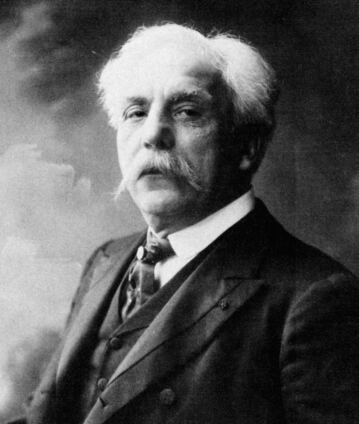Gabriel Fauré
Compositeur
Gabriel Fauré was an outsider as he had not studied at the Conservatoire de Paris. Nevertheless, he became one of the leading composers of his age. He mainly composed for smaller ensembles – his piano music and more than 100 songs were admired in Parisian salons – although the incidental music for Maeterlinck’s Pelléas et Mélisande and the Requiem are among his best-known works today.
At the age of nine, the musically gifted Gabriel Fauré travelled from his home in the south of France to Paris to train as a church musician at a boarding school that was unique in France at the time, the École Niedermeyer, named after its founder. His teachers there included Camille Saint-Saëns, with whom he would form a lifelong friendship. Fauré also had him to thank for the fact that, after his first posts in the provinces, he was offered the position of maître de chapelle at the famous Église de la Madeleine in Paris in 1877 – although the prestige that this position brought with it was woefully at odds with the salary. The composer also had to accompany choirs and give piano lessons. To make matters worse, Fauré’s life as a church musician was an unloved and rather monotonous existence: although he worked as an organist for 40 years, he did not write a single work for the organ. In 1896, he took over a composition class at the Conservatoire de Paris, where his students included Nadia Boulanger and Maurice Ravel. He was director of the conservatory from 1905 to 1920. Fauré shared the fate of Beethoven and Smetana: he lost his hearing, but this did not affect his creative power. His most famous works, such as the Requiem or his only opera Pénélope – which was a great success at the newly opened Théâtre des Champs-Élysées in 1913 – were composed when he was already almost deaf. At the age of 79, Gabriel Fauré died of pneumonia in Paris in 1924.